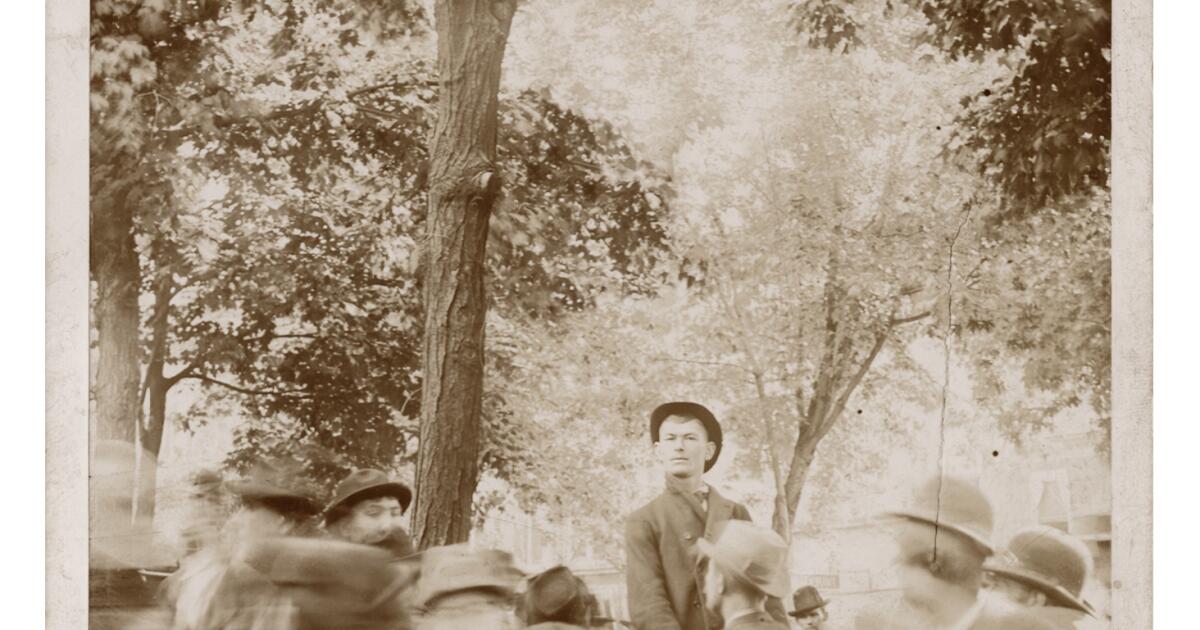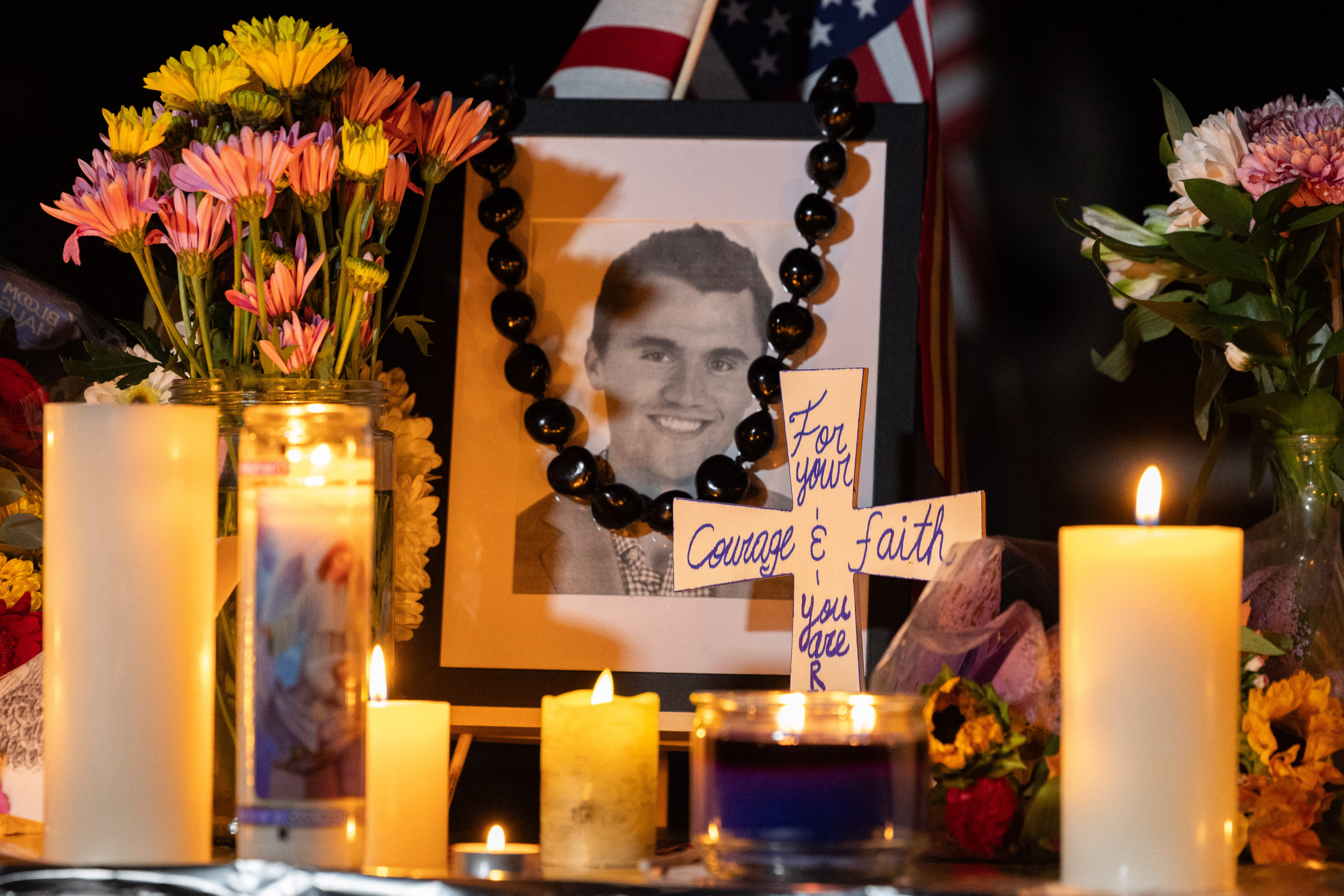
One day in 1953, the young and not yet widely known artist Robert Rauschenberg, just 26, knocked on the studio door of Willem de Kooning, 49, a newly successful figure just emerging into the forefront among a growing cohort of celebrated painters in postwar New York. Rauschenberg had come to ask for a drawing — not as part of a collegial exchange of works, which artists often do between themselves, but to mount a direct challenge by a younger generation to an older, newly established one.
Rauschenberg wanted a De Kooning drawing so he could erase it.
The young artist, in an audacious shot across the art world bow, was engaged in a symbolic act of Oedipal homicide. “Erasing” De Kooning would get the incipient powerhouse out of the way, artistically speaking. The critical gesture of removal at once recognized the authoritative potency of the father, while insisting that the son was necessarily charged with representing a changed world. The older artist knew what the younger artist was up to, and he charitably accommodated the bold request.
That exchange came to mind the other day in an urgent survey exhibition at USC’s Fisher Museum of Art. Los Angeles artist Ken Gonzales-Day has harnessed the power of artistic erasure in a related — if very different — way. Obliteration drives several extraordinary series of conceptual works that shine in the exhibition.
“Ken Gonzales-Day: History’s ‘Nevermade’” offers a timely retrospective of an artist who explores the way social erasure operates in American life. Identity — race, gender, class — has been at the forefront of artistic discourse for many years, but we tend to think of it as something being asserted or described. Gonzales-Day flips the coin, which has the unexpected effect of transforming identity from an answer into a question.
The show’s primary shortcoming is that the Fisher is too small to accommodate a full retrospective of an artist who has been making significant art for more than 30 years. He works in series, and one often wishes for more examples from each. It’s still worth seeing. The catalog, edited by guest curator (and USC professor) Amelia Jones, covers essential territory. The pressing relevance of the artist’s work for our present fraught era is irrefutable — not least when the dizzying transformation from analog to digital culture is harnessed to productive ends.
Beginning around 2002, Gonzales-Day assembled found, if largely forgotten, old photographs that document astounding brutality in shaping the history of the American West. The pictures show the mob ruthlessness of lynching — the extrajudicial murder of human beings, usually by hanging from a tree.
Rephotographing old pictures switched them from an analog to a digital format. Then, he was able to digitally erase both the corpse and the rope, leaving behind only the visual context in which the horror took place.
The lynching victim and the murder weapon — ostensibly the documentary photographs’ subject — disappeared. Weegee-style tabloid sensationalism in recording heinous crime likewise vanished. What’s left is a spectral scene, ghosted by the limitations of old black-and-white photographic technology and further heightened by the uneven glow generated by the camera’s flashbulb. The mob has become the subject.
“The Wonder Gaze, St. James Park (Lynching of Thomas Thurmond and John Holmes, San Jose, 1933)” is perhaps Gonzales-Day’s most widely exhibited single work. Made in 2006, the year the artist published “Lynching in the West: 1850-1935,” a revealing and much-admired book of his groundbreaking research into the subject, it shows the aftermath of an infamous Bay Area lynching.
Two men were dragged from a county jail and strung up on an elm tree in a park across the street, charged with (but not convicted of) the kidnapping and murder of a prominent local scion, just 22. Tensions were high, perhaps because of the national notoriety of the kidnapping-murder of Charles Lindbergh’s baby a year before. The San José double murder took place over three hours, with the tacit cooperation of a California governor, numerous state and city officials and various civic leaders. The atrocity was broadcast live on radio. Thousands assembled to watch.
A barren tree rises against a flat black background in “The Wonder Gaze,” while scores of people spread out across the lower register. They’re lined up like figures on the carved frieze of a Roman sarcophagus, except the slight tilt of the camera has them poised to slide out of the frame. Shadows of death and the afterlife commingle in the darkness.
Many individual faces are blurred — some seemingly intentionally, as if the original printer of the photographic negative meant to shield identity, protecting the complicit. Others blur as a simple side effect of the unidentified photographer’s flash. A male and female couple strolls arm in arm, like they’re out on a romantic date, while a young man just beside them glances warily over his shoulder toward the camera, as if guarded about being noticed. A somewhat older man next to him does the same, and you wonder whether they’re family.
Perhaps Royce Brier is among the milling crowd. The San Francisco Chronicle reporter won the 1934 Pulitzer Prize for telling the grim story in exceptional journalistic detail, despite threats against his own life for doing so from some of the more savage in the throng.
Most gaze up at the barren tree. That’s a centerpiece of the wonderment.
Lynching’s grotesque aim is only partly punishment, the arrogance of judgment not determined by a court of law against a claimed transgressor. In addition to illicit retribution, the overwhelming spectacle of public execution seeks maximum intimidation.
Vigilantes demand power, the brute authority to do as they please. From the carefully blurred couple to the unseen threats against a reporter, the complexities of a mob’s demands unfold. Gonzales-Day, through applying deft erasures, vivifies the wild and wicked record.
Usually, with a lifeless body hanging limp from a broken neck, the spectacle of gruesome victimhood in a lynching photograph obscures the bigger picture. Most of the 21 small lynching photographs on view with the victims erased were originally made as postcards, shocking souvenirs apparently to let the folks back home know just how much the sender delights in abject cruelty.
Gonzales-Day uncovered 350 instances of lynching that occurred in the state of California between 1850 statehood and the middle of the Great Depression — 10 times the previously established number. Most were crimes perpetrated by whites against Latinos, Asian Americans and Indigenous people, in addition to several Black people. Among the displayed selection are lynchings in at least six other states and Mexico.
But Gonzales-Day’s “Wonder Gaze” picture is physically big too. Rather than discretely framed, his altered photograph is printed on a vinyl panel applied like wallpaper spreading 8 feet high and 19 feet wide, above the wainscoting of the gallery wall. The scene is made virtually environmental. And because the lynching episode it recalls was perpetrated by two white men against a third white man, it gobbles up convenient assumptions about “us” versus “them.”
Gonzales-Day’s billboard-sized “The Wonder Gaze” is a mural as much as a photograph. (It’s worth remembering that the artist is a longtime professor at the Claremont Colleges, where José Clemente Orozco’s fiery 1930 mural of the Greek Titan Prometheus famously fills a wall in a Pomona College dining hall.) That scale matters. The men and women shown milling about and idly gazing — which we are now doing in the museum — become projections of us. So do the two lynched men who have been digitally erased. They’re gone, but we’re here.
Nearby, a gorgeous photograph of a single gnarled tree amid green rolling hills becomes quietly apocalyptic, as if the voluptuous earth is preparing to shake off morbid memories. Did a lynching happen here, “About a Hundred Yards from the Road,” as the cryptic title suggests? Out in the benign but swollen landscape, so placid now but so full of potential unrest, unspeakable things have happened. Have we just forgotten?
More recently, Gonzales-Day has been making drawings that appropriate historical prints and paintings related to European colonization of the Americas. These, too, delete the figures from the landscape settings of the originals — most notably from a 1760 Mexican casta (or caste) painting by Juan Patricio Morlete Ruiz, where racial ambiguity describes the mestizo child of a white-skinned father and brown-skinned mother. Castas charted categories of racial mixing, assigning hierarchies based on proximity to whiteness.
In the drawing, the painting’s landscape context, now empty, seems newly revealed. It is a strange space, an orderly progression toward an otherworldly infinity without any horizon. Colors become aberrant, shifting suddenly from greens into turquoise blue, while authentic nature steps aside for abstraction. The squash, cherimoya and mamey incongruously piled in the lower right corner recall the “strange fruit” of the mournful Abel Meeropol lynching song. Gestural markings of pencil and watercolor emphasize the artist’s hand, which underscores the human, unnatural fabrication of the casta system’s racial categorizations.
Born in 1964, erasure is integral to the shape of Gonzales-Day’s own identity. As a gay man — notably, like Rauschenberg — he was socially invisible in a heteronormative society. Erased. In a print of his portrait photograph “Anthony 2” (also included in the revelatory current survey “Queer Lens” at the Getty Museum), the myriad tattoos decorating the young man’s naked torso are emblematic of today’s widespread insistence on command and control of one’s own body. Gonzales-Day grew up during an era that pushed hard for queer visibility, so the use of erasure as a novel artistic tool is inspired.



